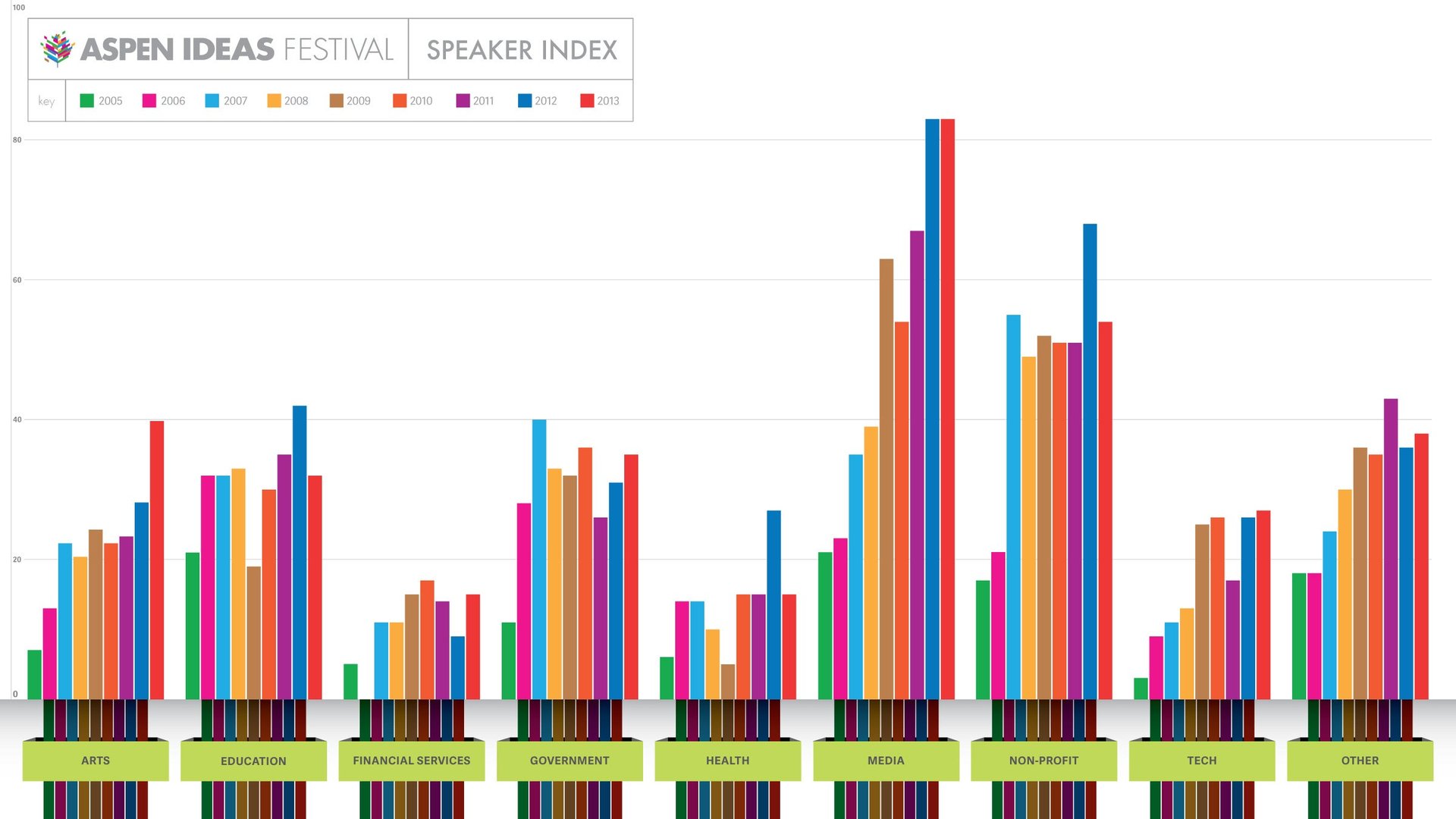How Aspen Ideas maintains its brilliant spontaneity
(See the infographic enlarged.)


(See the infographic enlarged.)
In the crisp, thin air of Aspen, Colorado, the surrounding mountains play only a supporting role in the summer, and in a certain light they look like a backdrop you could push right over. The stage is the town, which takes on the feel of a retreat, a place to withdraw into a smaller circle and get some perspective on the wider world outside.
The Aspen Institute has gathered leading thinkers there since 1949, but it was much more recently that Elliott Gerson and Kitty Boone, executives at the Institute, took to a whiteboard with an idea: why not open the doors to the public for a few days a year? “If you were an interested citizen or even a trustee, you had a hard time knowing what we did,” Gerson says.
Boone and Gerson did not look to other models of conferences or festivals and seek out a market niche, but they ended up with something they view as unique, and it has evolved and grown since its beginning in 2005. No single theme has driven past festivals, and networking is not a priority. Visitors have to navigate overlapping sessions to find their way, like college freshmen. What Gerson calls the “Aspen style” of presentation carries the day—informal, discussion-based, no dry lectures read from the page. The audience is involved.
From the beginning, Gerson and Boone had in mind that if there were art festivals and music festivals (including one in Aspen, where the sound of violins carries to the Institute’s campus), there could be an ideas festival as well—and that would be defined broadly. Not every session would involve management theory or strategic thinking about how to solve global problems (though there would be that too); you might also take in a seminar led by a philosopher about the nature of beauty.
Often the most memorable moments for participants involve attending a seminar devoted to something they knew nothing about beforehand, or discovering unusual cross-pollinations. The speakers at the Ideas Festival are also, at times, the audience, and you might find a former secretary of defense raising a hand with a question about cosmology. Austan Goolsbee of the University of Chicago, formerly the chair of the White House’s Council of Economic Advisers, recalls “panels on economic crisis that begin with a yoga and breathing expert making everyone in the audience and on the panel stand up in funny relaxation poses first.”
On one moving and inspiring occasion that lodged in Gerson’s mind, Yo-Yo Ma decided to pick up the cello to accompany the singing of a severely wounded veteran who was finding a way to a new life through music. On another night, in 2009, Kurt Andersen added some antic fun when he brought together a motley crew to record a favorite live episode of his public radio program Studio 360 at an Aspen club. Andersen touched off raucous cheers when he introduced the beloved band They Might Be Giants for a performance and an offbeat interview.
Goolsbee has noticed that over time that the festival has become “a bigger deal”—more participants, a higher profile—but, he adds, “I think it still has that same serendipity vibe of the old days.”
